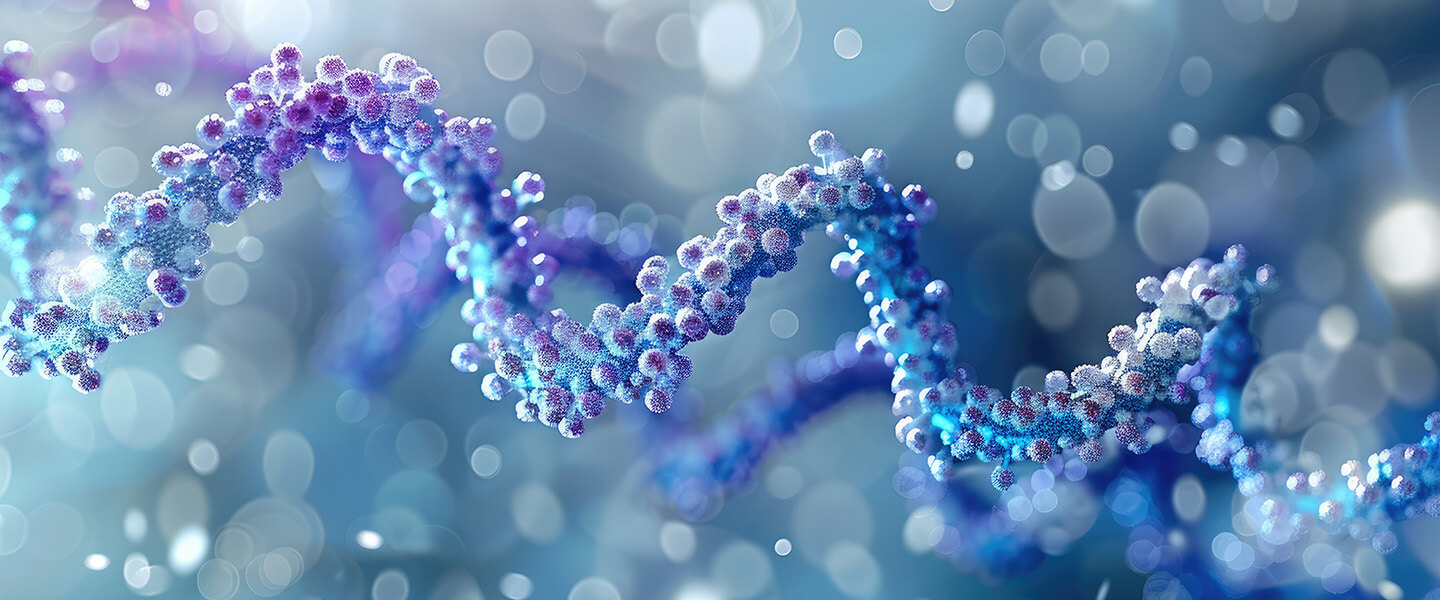A Proof-of-Concept Test for an RNA-Based Therapy to Prevent Effects of a Devastating Autism-Related Gene Mutation
A Proof-of-Concept Test for an RNA-Based Therapy to Prevent Effects of a Devastating Autism-Related Gene Mutation

Researchers led by a BBRF grantee have reported progress in developing an RNA-based therapy to treat neurodevelopmental disorders, including some autism spectrum disorders (ASDs).
RNA, like DNA, is a fundamental biological material. In the nucleus of cells, messenger RNAs (mRNAs) carry instructions encoded in DNA to cellular factories outside the nucleus called ribosomes, which assemble the many thousands of proteins that are the basis of all living structures and which perform myriad roles in living organisms.
There are many other types (“species”) of RNA that perform indispensable roles in our cells but are not directly connected to protein synthesis (these are “non-coding” RNAs). Among these are various kinds of RNA molecules that help to regulate how, when, and where genes are expressed.
The new research, appearing in the journal Molecular Therapy, reports efforts by a team led by Marta Biagioli, Ph.D., a 2015 BBRF Young Investigator at the University of Trento, Italy, to design and synthesize a long non-coding RNA (lncRNA) molecule able to increase protein production associated with a target mRNA. This molecule—referred to by an acronym, SINEUP—was then tested in experiments to provide “proof of concept” for its therapeutic application in neurodevelopmental disorders caused by mutations in a gene called CHD8.
Among the many gene mutations implicated in ASDs, those occurring in CHD8, while affecting a relatively small number of patients, are among the strongest ASD risk factors. When present in an individual, CHD8 mutations can have a catastrophic impact, by causing a loss of function in the protein encoded by the CHD8 gene. Although we have two copies of every gene in the nucleus of most of our cells, in some cases, including that of CHD8, when one copy of a gene is mutated or missing, normal function is not possible (not enough of the protein is made). In the case of the CHD8 gene, two functioning copies are, in fact, needed to generate the required amount of protein for normal cellular physiology.
The pathology associated with disabling CHD8 mutations or deletion of one copy of the CHD8 gene causes dysfunction in gene expression, specifically, the process by which the information in genes is transcribed into mRNA. In the emerging brain, this results in alterations in the development of neurons, with many possible clinical consequences, including macrocephaly, enlarged head size. These effects are seen in a subset of people with ASDs.
Dr. Biagioli’s BBRF Young Investigator grant was devoted to developing an RNA approach to ameliorating pathologies caused by loss or dysfunction of one copy of the CHD8 gene.
The method employed by her team makes use of a synthetically constructed antisense lncRNA, called a SINEUP molecule. “Antisense” refers to a molecular sequence that is complementary to that of a specific RNA molecule in cells that one wishes to target. The portion of the lncRNA molecule that is “antisense” relative to a specific target mRNA makes it act like an extremely precise homing device—an excellent property for a prospective therapeutic molecule.
The expectation was that the binding of the SINEUP lncRNA to its target, CHD8 mRNA, would lead to increased production of the CHD8 protein. This approach is a way of addressing the insufficiency of CHD8 protein in the neurons of people with a devastating CHD8 gene mutation that disables one copy of the gene.
Dr. Biagioli and colleagues tested their SINEUP RNA in test tubes, applying them in human-derived neural progenitor cells that were created from human cell samples, using stem-cell technology. They were also tested in fibroblasts—cells found in connective tissue—that were similarly generated from human cell samples, in this case, from cells donated by ASD patients with CHD8 mutations. These cells had aberrantly reduced levels of the CHD8 protein prior to the test. Application of the SINEUP lncRNA had the effect of raising CHD8 protein levels one and a half times—levels thought to be sufficient to support normal function.
Other tests indicated that the SINEUP RNA molecule, once applied, could reverse dysregulation of the transcription process through which the message of the CHD8 gene is copied into messenger RNA format. Application of the SINEUP RNA also reversed changes in epigenetic regulation that are seen when the CHD8 gene is mutated. Finally, tests were performed in a living organism—in zebrafish, which are often used in tests of genetic technologies. Delivery of the antisense RNA into zebrafish embryos with reduced levels of CHD8 prevented enlarged head size, which had been previously reported in this animal model and resembling the impact of CHD8 mutations in people.
“In conclusion,” the team reported, “our data provide experimental evidence toward the development of a state-of-the-art type of RNA-based therapy for neurodevelopmental disorders, with implications beyond the CHD8 syndrome and ASD, and with potential impact for a large repertory of currently incurable neurologic conditions caused by reduced levels of target protein.”
Noting that “CHD8 plays a pivotal role during the early phases of human development,” the team said that future research will include trying to determine the optimal timing for the delivery of antisense RNA molecules used in the CHD8 experiments. Such molecules, for ethical reasons, cannot be delivered in the human fetus. But the team suggests that a “key developmental window” occurring shortly after birth might provide a time to deliver antisense RNA therapies like the one they tested, with the chance of “still alleviating important ASD phenotypes [i.e., clinical manifestations].”
As the current paper reports a proof of concept, a good deal more experimentation in animal models will be needed before tests in humans of this or optimized versions of the SINEUP antisense lncRNA can be contemplated.
Christelle Golzio, Ph.D., a 2013 BBRF Young Investigator, was a member of the team. Co-first authors of the paper were: Drs. Francesca Di Leva, Michele Arnoldi, and Stefania Santarelli.



